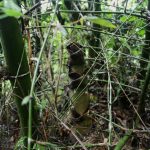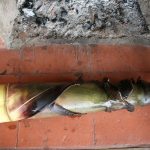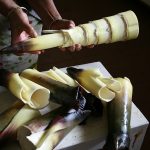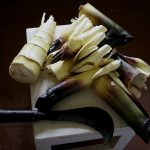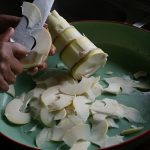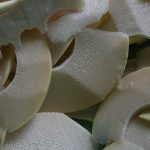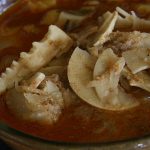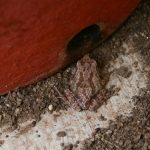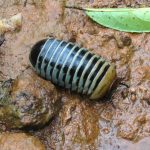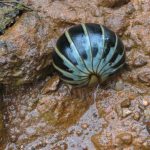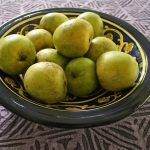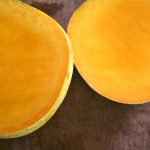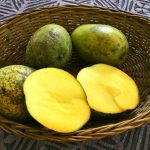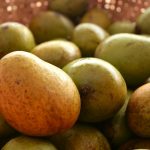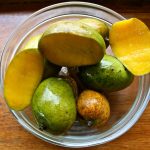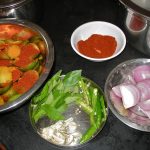Bamboo shoot is a much loved delicacy of the monsoon season. Though most varieties of bamboo have edible shoots, the two most commonly eaten in Coorg are the newly emergent culms of the Spiny or Thorny Bamboo (Bambusa bambos/ B. arundinacea) and the slender, asparagus like Ochlandra scriptoria/O.rheedii, known locally as watté baimbalé.
This season’s supply of the mullu baimbalé (thorny bamboo) has been badly hit, thanks to the flowering that happened earlier this year*.
Beginning in late May, emerging culms are harvested and the sliced shoots are processed by soaking in plenty of fresh water for 24 hours. This serves to leach out much of the hydrocyanic acid present in some varieties of bamboo. The rest is probably dissipated in the cooking process. In the picture below, you’ll see some bubbles in the water the sliced bamboo has just gone into. This frothing is instantaneous and, by the following day, you’ll see a lot more of it. There’s also a very distinctive fragrance to it – the scent of danger, perhaps?!
The water is changed and the shoots are once again soaked for 24 hours in just enough fresh water to cover them. The long soaking begins a process of light fermentation that gives the bamboo a slight but very appealing tang. The water from the second soaking can be used to cook the bamboo shoot. Prepared shoots are eaten in curries and stir-fries, turned into spicy pickles or preserved in brine for later use. Nowadays freezing is an easy and effective option. My mother usually has a stash of parboiled, frozen bamboo shoot to last her until the next monsoon!
* For me, the only good thing to come of this,was finding out firsthand about some of the “also rans” in the bamboo hierarchy- not too bad, some of them! Oh, and also some bamboo rice.


